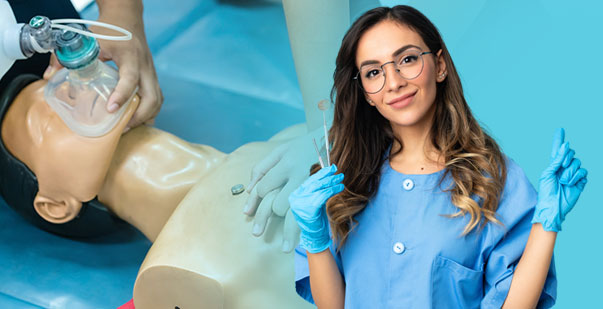Every healthcare professional must have a nodule of basic life skills to combat critical medical emergencies. Dentists also extend beyond oral care to encompass immediate medical responses. It necessitates a comprehensive understanding of Basic Life Support (BLS) skills. As thought leaders in healthcare, BLS for dentists can proactively upskill their knowledge base. This certification fulfills regulatory requirements and positions dentists as proficient first responders adept at handling unexpected medical emergencies within the dental setting. Through a commitment to continuous learning, dentists can elevate their professional stature and create a more resilient practice that prioritizes the overall well-being of their patients.
BLS certification for dentists: Yes or No?
Yes, dentists need BLS certification. Dental professionals often work closely with patients and may encounter medical emergencies, including cardiac events. BLS training for dentists equips them with skills to respond immediately, perform effective chest compressions, and administer rescue breaths in critical situations. A BLS-certified dentist can confidently and competently address emergencies, potentially saving lives within the dental practice.
BLS requirements for dental offices
People visiting a dentist’s office may have other ailments besides those related to their teeth. Some of these comorbidities could flare during a dental procedure and cause any of the below emergencies.
- Cardiac Arrest during Dental Procedures: When a patient experiences cardiac arrest during a dental procedure, immediate BLS skills will ensure the patient survives until emergency medical help arrives. The trigger for the cardiac arrest could stem from fear or a chemical reaction.
- Allergic Reactions: Severe allergic reactions, including anaphylaxis, may occur in response to medications or materials used in dental treatments, necessitating rapid BLS intervention.
- Syncope or Fainting Episodes: Patients may experience syncope or fainting, requiring BLS techniques to assess and manage the situation until the patient recovers.
- Respiratory Distress: Complications such as respiratory distress or obstruction may arise, demanding prompt BLS intervention to ensure adequate oxygenation.
- Drug-related Emergencies: Adverse reactions to medications administered in the dental office may lead to emergencies. You need BLS proficiency to stabilize the patient. The anesthesia administered during dental procedures often causes toxicity and needs immediate intervention.
- Seizures: Patients with a history of seizures may experience one during a dental visit, necessitating BLS skills to ensure a safe and controlled response.
- Choking Incidents: Foreign body obstruction leading to choking can occur, requiring immediate BLS skills actions to clear the airway and restore normal breathing.
- Hypoglycemic Episodes: Diabetic patients may experience hypoglycemic episodes, requiring BLS techniques to manage the situation until medical help arrives.
- Cardiac Events among Staff: Dental office staff, including dentists, are not immune to cardiac events, and BLS knowledge becomes crucial for immediate response until professional help arrives.
- Sudden Unconsciousness: Unexplained loss of consciousness in patients or staff members demands quick BLS assessment and intervention to identify and address the underlying cause.
Not all medical emergencies may arise from a dental procedure, but they could also stem from the patient’s ailments before they enter your office. However, once at your setup, you need to ensure their safety.
What BLS certification course do dentists need?
Dentists typically require Basic Life Support (BLS) certification courses for healthcare professionals. The selected course must cover CPR techniques for adults, children, and infants. Critical components of a dental BLS certification course for dentists include:
- Hands-on CPR Techniques: Dentists learn the proper chest compression and ventilation techniques for adults, children, and infants without rescue breaths. This method prevents transmission of diseases from unknown individuals.
- AED Training: The course should teach the use of automated external defibrillators (AEDs), ensuring dentists can respond effectively to cardiac emergencies.
- Choking Relief: Techniques for relieving choking in patients of all ages help address a typical emergency in dental offices.
- Team Dynamics: The course should emphasize effective team dynamics. It is a crucial healthcare skill requiring a coordinated response during medical emergencies.
- Online Courses: Dentists work on a tight schedule, leaving little time for upskilling in person. They should attend online courses to save time and study independently.
Read More: https://cpraedcourse.com/blog/cpr-essentials-chest-compression-dynamics/
Conclusion
Besides their specialized healthcare education, dentists, too, need knowledge of basic life support skills. When selecting BLS for dentists, ensure it aligns with the current guidelines and recommendations. Your decision ensures the training meets industry standards and lets you practice the skill freely. Additionally, BLS certifications come with a two-year validity, so dentists must go for a refresher course to remember these skills and practice them efficiently when needed.













